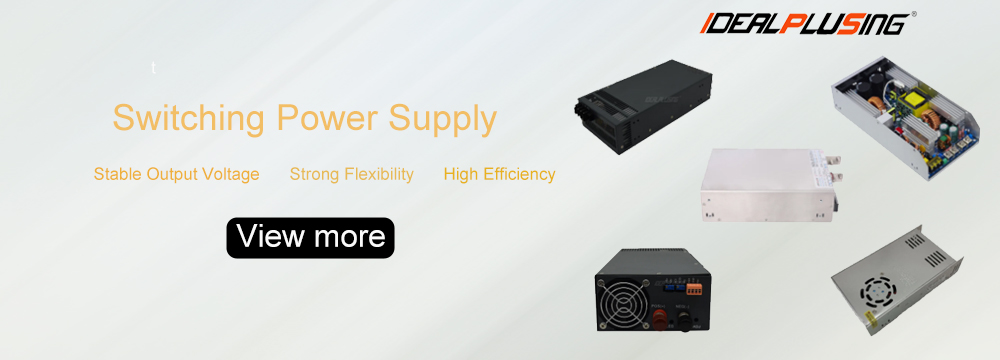[Introduction] In the switching power supply system, the filter capacitor plays a vital role. It is responsible for smoothing the voltage and current of the power supply output, reducing ripple interference, and providing a stable power supply environment for the back-end load. However, when the filter capacitor frequently burns out, it will not only affect the normal operation of the switching power supply, causing the performance of the equipment to decline or even fail to operate normally, but may also cause safety hazards. In-depth exploration of the reasons for the burning of the filter capacitor is of great significance to ensure the stable operation of the switching power supply and improve the reliability of the equipment.

In the switching power supply system, the filter capacitor plays a vital role. It is responsible for smoothing the voltage and current of the power supply output, reducing ripple interference, and providing a stable power supply environment for the back-end load. However, when the filter capacitor frequently burns out, it will not only affect the normal operation of the switching power supply, causing the equipment performance to deteriorate or even fail to operate normally, but may also cause safety hazards. In-depth exploration of the reasons for the burning of the filter capacitor is of great significance to ensure the stable operation of the switching power supply and improve the reliability of the equipment.
Improper capacitor selection
Insufficient withstand voltage
The withstand voltage of the filter capacitor is one of its important parameters. During the operation of the switching power supply, the voltage across the capacitor is not constant, but there are certain fluctuations and spikes. If the withstand voltage of the selected capacitor is determined only according to the nominal output voltage of the power supply, without fully considering the voltage spikes that may occur in actual work, then when the voltage spike arrives, the capacitor is very likely to be broken down due to the excessive voltage, which will cause burning. For example, the nominal output voltage of a switching power supply is 12V, but at the moment when the switch tube is turned on and off, voltage spikes of up to 15V or even higher may appear across the capacitor. If the selected filter capacitor has a withstand voltage of 12V, the capacitor will be easily damaged by overvoltage if it is in this working environment for a long time.
Capacitance mismatch
The capacitance of the capacitor determines its ability to store charge and its suppression effect on ripple current. If the capacitance is too small, it cannot effectively store enough charge to smooth voltage fluctuations, which will cause the ripple voltage to increase and make the capacitor bear greater current stress. Under long-term high current stress, the equivalent series resistance (ESR) inside the capacitor will generate a lot of heat. When the heat accumulates to a certain extent, it will cause the capacitor to burn. On the contrary, if the capacitance is too large, although it can effectively reduce the ripple voltage, it may generate excessive charging current at the moment of power startup, causing impact on the power supply circuit, and may even damage other components, while also increasing the cost and volume. For example, in an audio power amplifier switching power supply with high ripple requirements, if the filter capacitor capacitance is too small, the ripple interference in the audio signal will be amplified, affecting the sound quality, and the capacitor is also prone to burn due to overheating.
Wrong type selection
Different types of filter capacitors have different characteristics. Common filter capacitors include aluminum electrolytic capacitors, ceramic capacitors, tantalum capacitors, etc. Aluminum electrolytic capacitors have large capacity and relatively low cost, but their ESR is large and their high-frequency characteristics are poor, so they are suitable for low-frequency filtering. Ceramic capacitors have the advantages of low ESR and good high-frequency characteristics, but their capacity is relatively small and they are often used for high-frequency filtering. Tantalum capacitors have the characteristics of good stability and high precision, but they are expensive and have a certain risk of failure. If a capacitor type that is not suitable for the operating frequency and environment is used for filtering in a switching power supply, it may cause the capacitor performance to deteriorate or even burn out. For example, in a high-frequency switching power supply, if an aluminum electrolytic capacitor is mistakenly selected as the main high-frequency filter capacitor, due to its poor high-frequency characteristics, it cannot effectively filter out high-frequency ripples, which will cause the capacitor to heat up severely and eventually burn out.
Circuit design defects

Excessive ripple current
When the switching power supply is working, a certain ripple current will be generated, and the filter capacitor needs to withstand this part of the ripple current. If the circuit design is unreasonable, resulting in excessive ripple current, exceeding the rated ripple current value of the capacitor, the capacitor will burn out due to overheating. There may be many reasons for excessive ripple current, such as improper selection of the switching power supply topology, too small inductance value, too low switching frequency, etc. Taking the buck switching power supply as an example, if the inductance value is too small, the inductance cannot store enough energy during the on-time of the switch tube, resulting in the capacitor needing to provide a larger current to maintain the load power supply when the switch tube is turned off, thereby increasing the ripple current. In addition, too low a switching frequency will lengthen the charge and discharge cycle of the capacitor, which will also increase the ripple current.
Poor heat dissipation design
The filter capacitor will generate heat due to its own ESR during operation. If the heat dissipation design is poor and the heat cannot be dissipated in time, the capacitor temperature will continue to rise. When the temperature exceeds the allowable operating temperature range of the capacitor, the performance of the capacitor will drop sharply, or even burn out. In some switching power supply designs, the heat dissipation of the capacitor may not be fully considered, and sufficient heat dissipation space is not provided for the capacitor, or effective heat dissipation measures such as heat sinks and fans are not adopted. For example, in a closed power supply housing, the heat generated by multiple heating elements (including filter capacitors) cannot be dissipated in time, resulting in excessively high internal temperatures. If the filter capacitor is in a high temperature environment for a long time, its life will be greatly shortened and it is easy to burn out.
Missing or ineffective overvoltage protection
During the operation of the switching power supply, the output voltage may increase instantly due to various reasons, such as sudden changes in input voltage and load short circuit. If there is no effective overvoltage protection circuit designed in the circuit, or the overvoltage protection circuit fails, the excessive voltage will be directly applied to the filter capacitor, breaking down and burning the capacitor. For example, in some simple switching power supply circuits, overvoltage protection elements such as voltage regulator diodes are not set. When the input voltage suddenly increases, the output voltage also increases, and the filter capacitor is likely to be damaged due to being unable to withstand excessive voltage. Even if an overvoltage protection circuit is set, if the performance of the protection element is poor or the parameter setting is unreasonable, the overvoltage protection may fail and fail to protect the filter capacitor.
Electromagnetic interference
In a complex electromagnetic environment, the switching power supply will be subject to various electromagnetic interferences. These interferences may generate induced voltages and currents on the filter capacitor, causing additional heating of the capacitor. If the intensity of electromagnetic interference is too large and exceeds the bearing capacity of the capacitor, it may also damage the internal structure of the capacitor, causing its performance to degrade or even burn out. For example, in the switching power supply used near some large motors, welding machines and other equipment, since these equipment will generate strong electromagnetic radiation when working, the filter capacitor in the switching power supply is easily affected by electromagnetic interference and frequently burns out.
Capacitor quality problems
Manufacturing process defects
The manufacturing process of the capacitor directly affects its quality and performance. If there are process defects in the manufacturing process, such as poor contact between the electrode and the electrolyte, impurities inside the capacitor, and irregular winding process, the ESR of the capacitor will increase and the withstand voltage performance will decrease, making it easy to burn out under normal working conditions. Capacitors produced by some small manufacturers cannot guarantee the consistency and stability of product quality due to limited production equipment and process level, and the probability of product quality problems is relatively high. For example, during the production process of a certain brand of capacitors, due to inaccurate winding process, there is a hidden danger of local short circuit inside the capacitor. After a period of use, these capacitors are prone to burnout failures.
Summary
The old burning of the filter capacitor of the switching power supply is caused by the combined effect of multiple factors. From capacitor selection, circuit design, working environment to capacitor quality, any problem in any link may cause the burning failure of the filter capacitor. In order to effectively solve this problem, when designing and using the switching power supply, it is necessary to comprehensively consider various factors, reasonably select capacitors, optimize circuit design, improve the working environment, and ensure the use of high-quality capacitor products. Only in this way can the reliability of the switching power supply be improved, its stable operation be guaranteed, and the service life of the equipment be extended.
About IDEALPLUSING
Who we are?
We IDEALPLUSING are proud to be a solution provider rather than a pure manufacturer.
We have established close cooperation with many power supply manufacturers, especially those Chinese manufacturers with less sales or insufficient experience in overseas markets.
We at IDEALPLUSING not only provide products, but also strive to provide customers with suitable power supply solutions and quotations.
Our core competitiveness lies in carefully selecting a variety of power supply options to help customers evaluate and choose the most suitable power supply solution.






